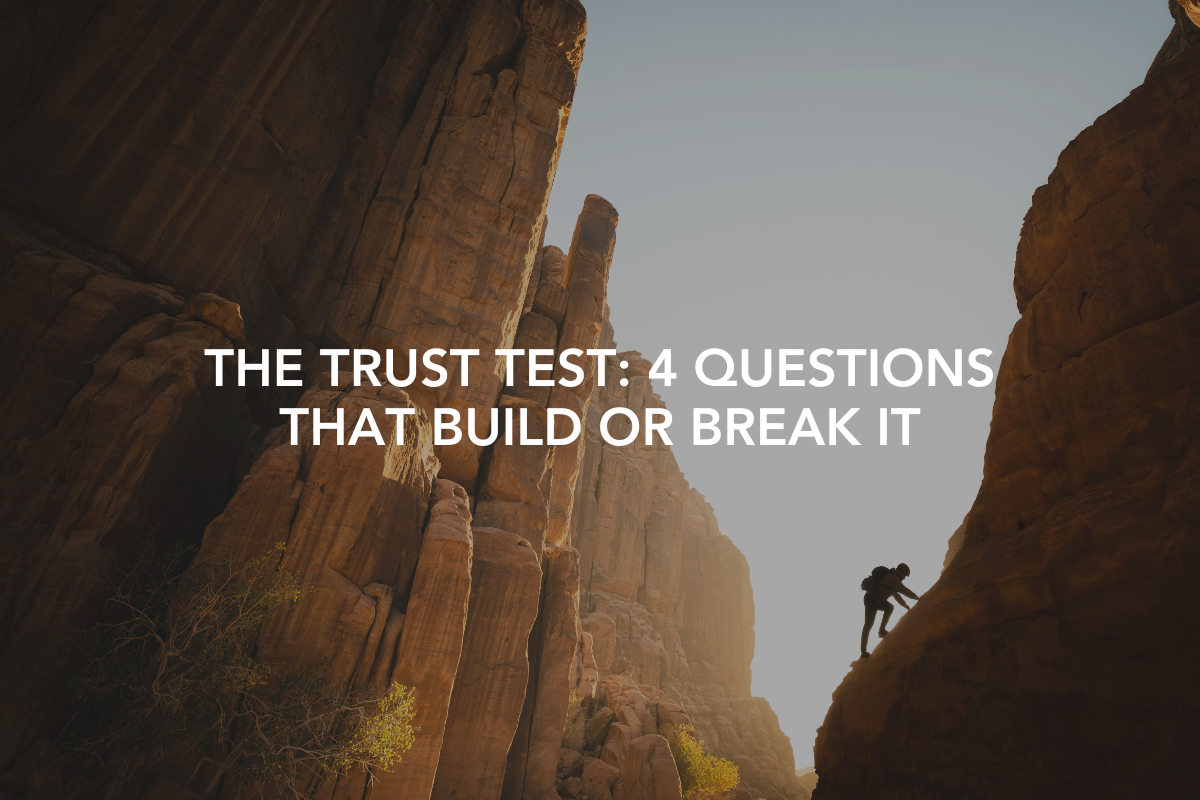This is the final post in our series on building trust. If you missed our previous posts, you can start with Building Trust Part 1: Communication.We all have expectations of ourselves and others and they fall into one or more of the following categories: communication, character, concern, competence, connectedness, and consistency. Trust is built when we prove reliable by meeting others’ expectations in these areas.
Proving Consistency and Balancing the Rest
People tend to trust people who show predictability or consistency. When someone is erratic or unpredictable, we are less likely to trust him or her. For example, if a supervisor is friendly and joking around one day, then the next day is angry and withdrawn, and another day is serious and reserved, people will develop a sense of uncertainty about this leader and begin to question their consistency.
Consistency is also important in performance. How would you feel if, over the past year, the person responsible for producing financial reports for an organization provided some that were accurate and others that had errors? Such inconsistency would result in you second guessing his or her work, ultimately eroding the trust you have in him.
While none of us are 100% consistent, we must regularly assess if we are consistent enough in our words, actions, and performance to ensure a reasonable level of trust.
Do you personally demonstrate consistency in your words, demeanor, and deeds? How do you know?
Does your organization demonstrate consistency with your customers? How do you know?
The Balancing Act
We manage trust when we continually monitor Communication, Character, Concern, Competency, Connectedness, and Consistency. If distrust is detected between people or within the overall organization, it can most often be traced to the perceptions and expectations related to one or more of these six elements. Leaders face the daunting challenge of constantly balancing all six of the elements, even though attending to one may result in the perception that the others are being neglected. Small wonder that cultivating and maintaining trust is such a challenge!
Looking for the Signs
The following lists will help you to assess the level of trust found in your organization.
SIGNS OF TRUST
Regular time together as a team and with team members
Problems addressed quickly and constructively
Positive and enjoyable work environment
Freedom and encouragement to question authority
Mutual support for most significant decisions
Atmosphere of care and concern for one another
Information freely shared between people and groups
Minimal suspicion regarding motives and decisions
Deepening level of dialogue over time
Long term retention of employees and other constituents
Regular, unscheduled opportunities for dialogue
SIGNS OF BROKEN TRUST
Excessive reliance on policies
Fear of challenging authority
Avoidance of difficult subjects
Increased cliques
Decreased social interaction
Reduced enjoyment
Second-guessing most decisions
Increase of critical discussions behind closed doors
Heavy dependence on hierarchal structures
Atmosphere of suspicion and tension
Intentionally withholding information
Significant turnover of employees and other constituents
Self Assessment
Rate yourself from 1 (poor) to 5 (excellent) in the following areas. Why did you give yourself each rating?
Reflect upon what, if any, discrepancies exist between your assessment of yourself and how others see you? Why may these exist?
Communication
Character
Concern
Competency
Connectedness
Consistency
What signs of trust and distrust do you believe are present in the relationship or organization at this time?
What could be done to cultivate a culture of trust in your organization?
If you missed it:
For more on cultivating trust, read the article "Cultivating Trust in Your Organization" in our book FIT – Improving the Leadership Health of Yourself and Others
Jay Desko is the CEO of The Center Consulting Group and brings experience in the areas of organizational assessment, leadership coaching, decision-making, and strategic questioning. Jay’s degrees include an M.Ed. in Instructional Systems Design from Pennsylvania State University and a Ph.D. in Organizational Behavior and Leadership from The Union Institute.






![Preparing for the (Expectedly) Unexpected [VIDEO]](https://images.squarespace-cdn.com/content/v1/571fc0ea1d07c0fd6d72c167/e4193bcf-29f7-46c2-be12-9116791d40cf/unexpected+blog.png)